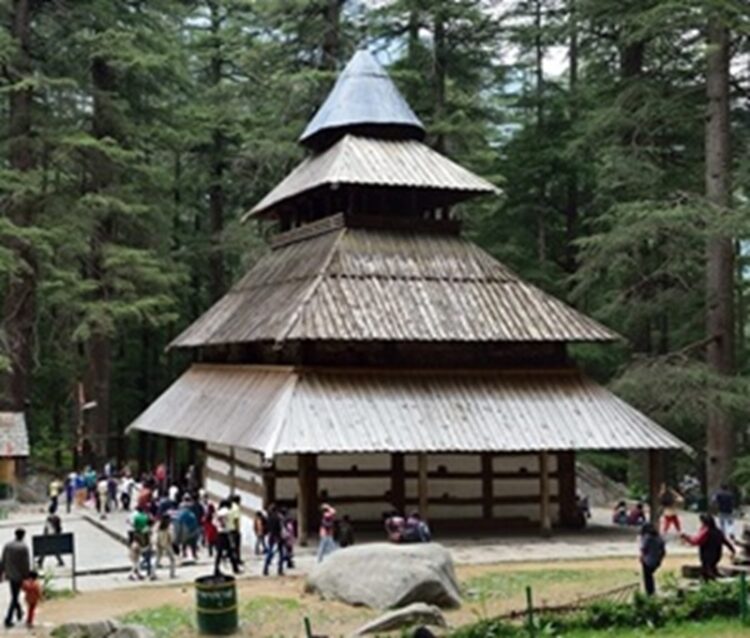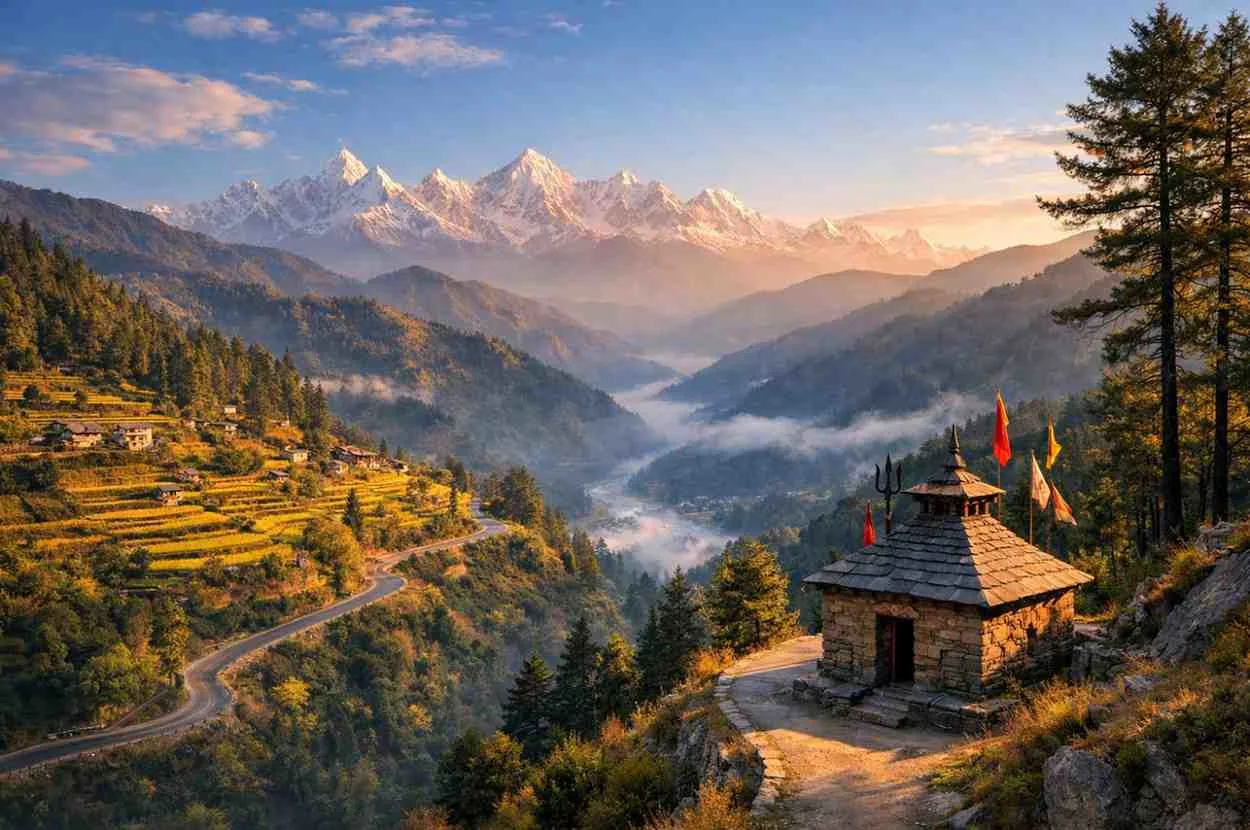In the Kullu Valley’s towering deodars, the Hidimba Devi Temple (Haddimba Temple) is a quiet refuge and a symbol of Manali’s rich culture. This historic Hidimba Devi temple draws visitors for its religious significance, remarkable architecture, and compelling mythology.
Manali’s most famous and frequented monument is Hidimba Devi Temple. This temple is an architectural marvel and holy destination in Dhungri Van Vihar’s lush cedar forest. Himalayan travellers must visit the shrine for its peace and mystique.
Who’s Hidimba Devi?
Hindu mythology reveres Hidimba Devi, a Mahabharata character. She lived in the wilderness with her brother Hidimb as a rakshasi. Pandava brother Bhima met Hidimba in exile, tradition says. Hidimb was vanquished by Bhima after a tough battle. Hidimba then proposed to Bhima, who agreed. Their marriage produced Ghatotkacha, a brave Kurukshetra warrior. Loving, powerful, and dedicated, Hidimba’s metamorphosis from a feared monster to a revered divinity is remarkable.
History of Hidimba Devi Temple
Hidimba Devi Temple was erected by Maharaja Bahadur Singh in 1553. The temple honors Hidimba Devi, who meditated nearby. Folklore and local devotion intermingle with the temple’s history. To Kullu and Manali residents, the temple has been a center of devotion and ca ultural emblem for generations.
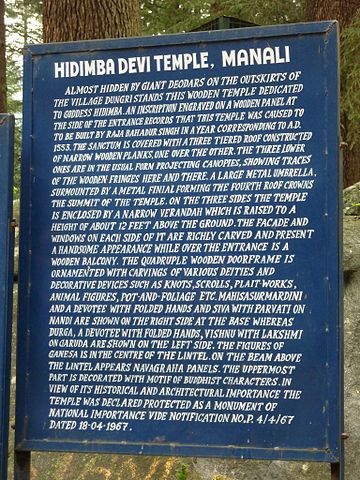
Hidimba Devi Temple Architecture
Its unique architecture distinguishes the Hidimba Devi Temple from other temples in the vicinity. The pagoda-style temple has a three-tiered roof with a brass cone. Wooden sculptures and a distinctive style characterize the temple.
Sanctum, Wood Carvings
The sanctuary holds Hidimba Devi’s idol in darkness. Walls with intricate wooden carvings of deities, animals, and flowers surround the sanctuary. These carvings showcase local artists and the region’s creative history.
The Roof and Outside
The Himalayan-style slate temple roof is tiered. To contribute to the temple’s rustic beauty, exquisitely carved wooden beams support each layer. A beautiful wooden gateway welcomes devotees and tourists to the shrine.
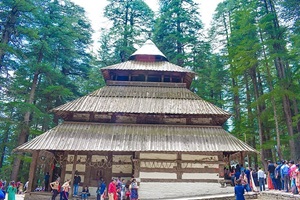
Spiritual Importance of Hidimba Devi Mandir in Hinduism
For Mahabharata enthusiasts, the Hidimba Devi Temple is sacred. The temple of Hidimba Devi, a strong deity, is a Shakti peeth. Believers say Hidimba Devi may grant wishes and protect her devotees from evil.
Hidimba Devi Events and Rituals
Hidimba Devi Fair or Dhungri Mela, held in May, brings the shrine to life. At this occasion, believers from around the region worship, dance, and seek the goddess’s graces. The temple draws many visitors during Navratri, when Hidimba Devi is worshipped.
Places near Hidimba Devi Mandir
Dhungri Van Vihar’s lush cedar trees surround the Hidimba Devi Temple, 2 km from Manali. The temple is mysterious and suitable for meditation and spiritual reflection due to its tranquility.
Cedar Forest
The deodar trees around the shrine offer a peaceful and scenic setting. Visitors may connect with nature while visiting the spiritual site in the forest’s flora and animals.
Other Attractions Nearby
Many Manali tourist attractions, including Old Manali town, Manu Temple, and Manali Nature Park, are close to the temple. Travelers can add a beautiful woodland trek to their schedule to visit the temple.
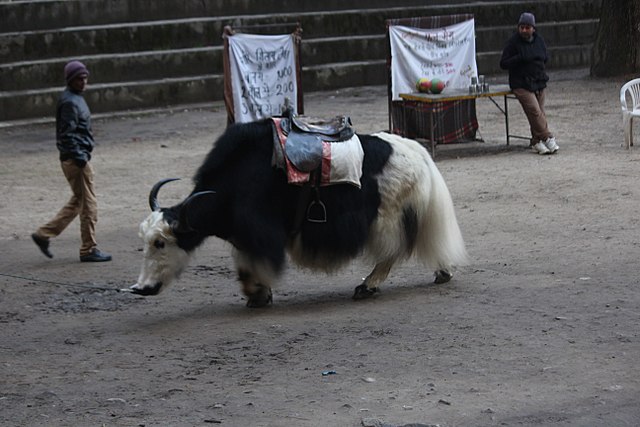
Hidimba Devi Temple Culture
Local culture and customs are shaped by the Hidimba Devi Temple. Traditions and traditions are preserved and enjoyed at this religious centre.
Neighborhood Folklore
Traditional tales of Hidimba Devi and her son Ghatotkacha are engrained. Family legends about their courage and heavenly talents preserve culture. Festivals and community gatherings tell these stories, highlighting the temple’s importance in local culture.
Craft and Art Influence
Local craftspeople are inspired by the temple’s architecture and sculptures. Local crafts mirror the temple’s traditional woodwork, preserving the region’s art. Local residences and communal structures have temple-inspired décor.
Visitor Data
Visiting Hidimba Devi Temple is peaceful and enlightening. Here are some key travel details:
Timing and Fee
Temple hours are 8:00 AM to 6:00 PM. Free admission makes it accessible to all.
Best Visit Time
The temple is best visited in spring and fall. These seasons provide favourable weather, allowing people to explore the temple and its surrounds.
How to Reach Hidimba Devi Temple
Easy road access to the temple. The main town of Manali offers taxis and local buses. The nearest railway station is Joginder Nagar, 160 kilometres from Manali, and the nearest airport is Bhuntar, 52 kilometres distant.
Visitors’ Tips
Temple holiness is crucial as a site of worship. Be mindful of religious rites and dress modestly.
Photography: Take photos of the temple’s façade but not its inside.
Before entering the shrine, visitors must remove their shoes.
Local Politeness: Deal with locals respectfully. They love sharing temple legends.
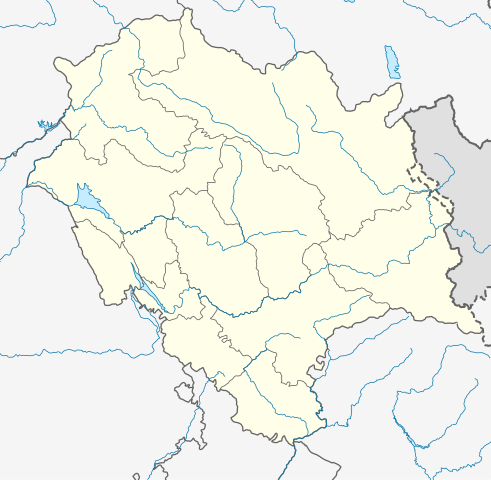
Protecting Hidimba Devi Temple
Historical and cultural preservation of the Hidimba Devi Temple is essential. Local government and preservation groups work to preserve the temple.
Regular care and conservation prevent the temple’s wooden construction from rotting. The roof and walls are reinforced and the wood is preserved naturally.
The community is crucial to temple preservation. Temple festivals and cultural activities raise awareness of its importance and protection. The temple’s legacy is preserved via community engagement.
Conclusion
More than a historical relic, the Hidimba Devi Temple represents the region’s rich cultural and spiritual legacy. Travelers to Manali must see its distinctive architecture, intriguing legends, and tranquil settings. The Hidimba Devi Temple is a wonderful experience for history lovers, devotees and, spirituality seekers.
